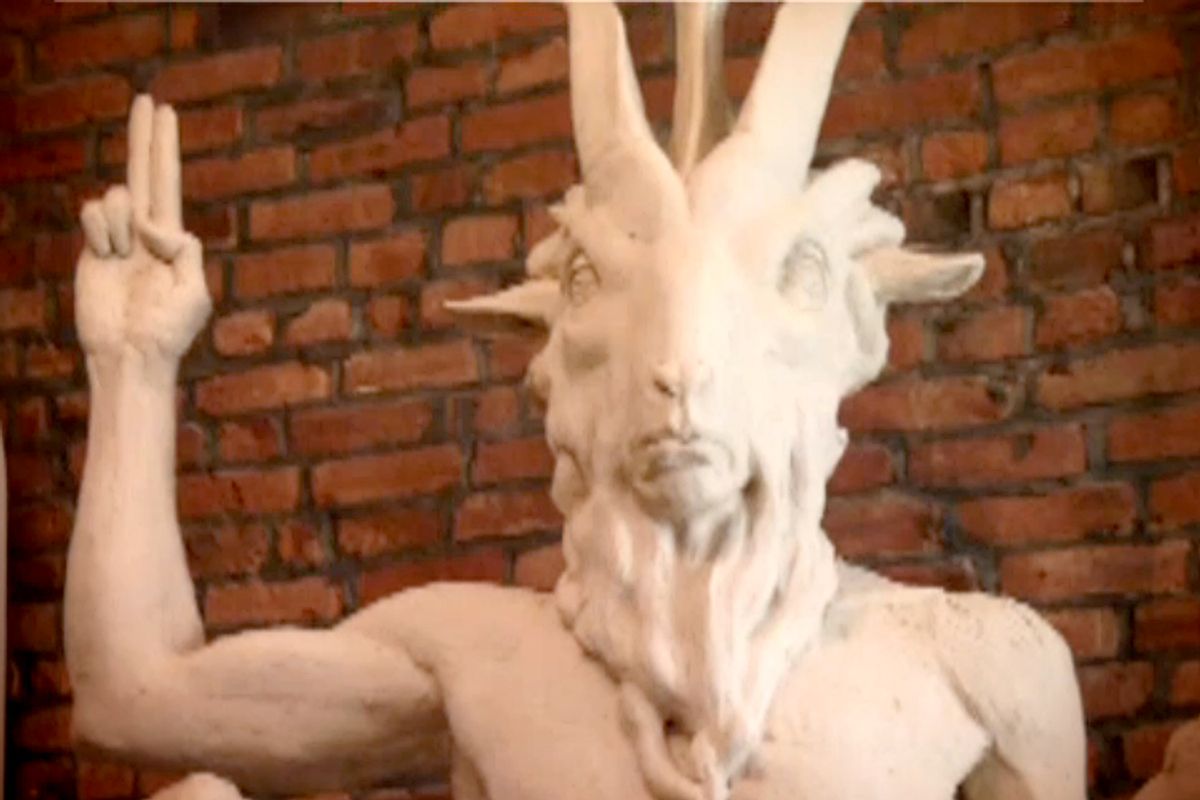After much ado, a Satanic “black mass” scheduled to be held at Harvard University fizzled out to some nebulously organized get-together at a Chinese restaurant, or so it seems. The murkiness of the conclusion is in some sense fitting for the murkiness of the entire affair, which seemed mostly theatrical from the outset, though haunted by an inability to really articulate what the point of the production was.
Like the middling one-act play this entire situation panned out to be, the intention of the authors never quite emerged from the intentions of the players. This was probably complicated by neither group having a very well defined statement of purpose, with the Harvard Extension Cultural Studies Club claiming its goal was to “learn and experience the history of different cultural practices,” while a spokesperson for the Satanist Temple invited to perform the black mass explained that it is merely “a declaration of personal independence for the people engaged in it.”
The melding of the goals of the two organizations was further accomplished when the mass was called sharply into question by Boston area Catholics. The HECSC defended the event by responding that “offense is anachronistic and based on intolerance and ignorance about the practice [of] Satanism,” which was more or less identical to the position the Satanists took. Both groups seemed to relish the resistance to the staging of the mass, and at the conclusion of it all the HECSC released a statement that so thoroughly interwove Satanist and club sentiments the two could barely be disentangled: “The Satanic Temple has informed us that they will stage their own black mass ceremony at an undisclosed private location to ‘reaffirm their respect for the Satanic faith and to demonstrate that the most powerful response to offensive speech is to shame those who marginalize others by letting their own words and actions speak for themselves.”
If there is any substance to Satanism beyond an eminently collegiate desire to be stridently counterintuitive, you wouldn’t know it from following this saga. Never at any point was anyone able to articulate a practice or tenet that wasn’t a mere reaction: the black mass is only a riff, after all, on the Catholic Mass, and the symbols and associated "sacraments" are all imitations as well.
In fact, the very decision to host the black mass seems at the final analysis to be derivative: the HECSC never bothered to explain what about the event would’ve been ennobling or enriching for anyone in particular; they assumed that something other than the dominant culture had to have some kind of value merely by nature of being unlike the norm. Presumably institutions of higher education aspire to greater goals than exposure to whatever not-norm is floating around in the cultural ether, but if a metric existed for selecting Satanism in particular, it was never provided.
Which ultimately indicates the reason the HECSC was so paralyzed when it came to defending the choice, though they managed to sputter about arrogance and ignorance. The fact was that they were only able to cite personal defects among members of the resistance rather than the merits of their own position because they more or less occupy a non-position, one that states quite simply that other things are good while patently refusing to interrogate what exactly those other things are. The Boston community, meanwhile, was more than happy to pry into the specific contents of the traditions and practices at hand.
For the HECSC, religions are content neutral. That is, all religions are of identical value and validity simply because they are religions and people practice them; there can be no inquiry into the ways in which they genuinely differ and/or offer more or less enriching experiences to interested parties or adherents. So when the Catholics and other assorted Christians of the Boston area responded sharply to the announcement of the mass, it was impossible for the HECSC to mount much of a spirited response: all they could say was that the traditions were distinct, and that anyone who couldn’t see the supposedly inherent value in distinct traditions was guilty of rank ignorance.
Yet it remains a vexing fact that religions really do differ. It is advantageous for some institutions, such as the state, to retain a neutral attitude toward religions for particular purposes, such as constitutional treatment and so forth. But that attitude of neutrality hardly necessitates an overall social attitude of neutrality, and the fact remains that whether or not groups like the HECSC want to contend with it or not, religions are and will continue to be in conflict, and it is impossible to deal with those conflicts with nothing but procedural norms.
At the end of the day, the world probably learned more about Catholicism from this fiasco than "other cultures" or Satanism in particular due to numerous prolonged media discussions of consecrated hosts and the Eucharist, both of which Catholic authorities routinely seemed far better versed in than their Satanic adversaries. This is probably due to Catholicism actually having an ethos related to sacramental theology and evangelism, both of which were prominent features of the church’s complaint. In that sense it seems the HECSC did accomplish something, namely giving the public a primer on Catholic sacramental practice in keeping with its educational purpose. The sad reality is only that it took another organization directly contradicting the activities of the HECSC to carry out its work.

Shares